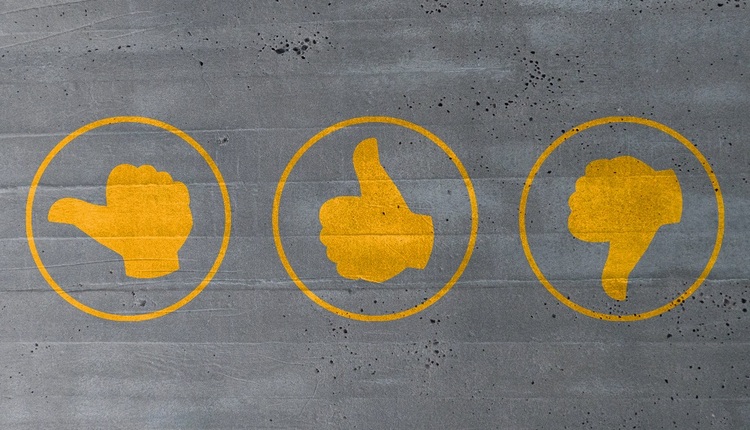If youre an optimist, a box is half full. If youre a pessimist, its half empty. If youre a shipping manager, its not yet ready for shipping.
Whatever you ship, whether its industrial valves, electronics or porcelain vases, you need to ensure that your products arrive in good condition. Selecting the right carton and corrugated material ensures that the carton itself is up to the task (see Boxing Your Products on page 18 from the April 2000 issue). But what goes between your products and the carton wall is equally important.
While the term dunnage is still widely used, its being replaced by the phrase inside-the-box packaging. Dunnage is defined as loose materials around a cargo to prevent damage and padding in a shipping container. Most suppliers do not feel it covers the spectrum of protective packaging options available.
Despite the wide range of product options, there are three primary functions served by inside-the-box packaging: void fill, cushioning and block-and-brace. Determining which product to use, however, is a little trickier. What you ship has a lot to do with what you use. The weight, fragility and even shape of the products influence your decision, so its impossible to say whats the right kind of packing material. Material cost, ease-of-use and customer perception may also influence your decision.
Determine Functionality
In order to understand the functions properly, we need to add two words to our list of considerations: compressibility and resiliency. Compressibility is how much give is in a particular material. Resiliency refers to the ability of a material to resume its original shape after compression. The density of the object is inversely related to the compressibility of the packaging material required.
Void fill prevents items from shifting inside the box and should also provide some structural support to the carton itself since insufficiently filled cartons can crush under stacking and handling. However, if significant crush resistance is a requirement, either a stronger carton or some form of block-and-brace that passes stress around the product (rather than through it) may be required. Void fill should have low compressibility and high resiliency. Void fill that compresses too easily will not prevent items from shifting inside a carton.
Cushioning protects fragile or sensitive products from shocks encountered in handling and transportation. Cushioning is not reserved for delicate items, however. Even metal parts can be cracked if subjected to enough impact. Cushioning should have moderate compressibility as well as high resiliency. Cushioning that is too easily compressed may not provide adequate protection. To adequately protect items, cushioning material must completely surround the item, including the bottom.
Block-and-brace prevents products, usually relatively heavy ones, from shifting in a carton in a much more aggressive manner than simple void fill. With block-and-brace packaging, not all voids need to be filled to be effective. When used with solid, non-fragile objects, block-and-brace packaging may add considerable strength to the carton. Block-and-brace packaging should have low compressibility and, since it is not expected to compress significantly, requires only low-to-moderate resiliency.
Inside-the-box packaging may serve more than one of the basic functions, depending on the products being shipped. Both void fill and block-and-brace, for example, can provide cushioning. Similarly, cushioning material also tends to serve as void fill. Because of this, and because function depends on application, its difficult to group products strictly according to function. All inside-the-box packaging can provide a safety space between the outside of the carton and the products to protect them from damage if the carton is punctured.
Product Options
Many of the following materials are offered by a wide range of companies (see the Parcel Shipping & Distribution Buyers Guide for a full listing of companies and contact information). Individual products or manufacturers are not mentioned where multiple companies offer variations on the same basic product. For unique or harder-to-find items, manufacturers and products are mentioned.
Loose Fill
Loose fill is still the least expensive and easiest to use type of void fill available. There are over 60 varieties of loose-fill products available in different materials and shapes to accommodate a wide range of products. Starch-based loose fill is also available for customers concerned about disposability and recycling issues.
Because it flows (either from manual or powered feeders), loose fill quickly and easily fills all voids in a carton, making it very easy to use with variable carton contents. According to industry sources, the recent growth of e-commerce companies has spurred an increase in loose fill sales, based in part on the need to accommodate extreme variability in the shape, size and number of products packed in standard carton sizes and shapes.
Loose fill also provides good cushioning for light- to medium-weight items. Heavy items, particularly irregularly shaped ones, are more likely to crush most types of loose fill and reduce its efficiency as void fill. Loose fill is a lightweight material, however, some new products are even lighter and offer weight savings that can amount to freight cost saving.
Because most loose fill maintains its ability to flow during handling, it may migrate to the top of the carton allowing some irregularly shaped and rounded items to settle, reducing the amount of protection on the bottom of a carton. Other disad-vantages include the fact that it is bulky and typically requires significant storage space and disposal costs (if waste is charged by volume and not weight). A hidden limitation to loose fill is that small items may get lost in the packaging, resulting in customer claims that items were not shipped.
Recycling and waste disposal are also issues for some companies. Some shippers reuse loose fill they receive to package their own shipments. While this is sound business practice from ecological and financial perspectives, it may reduce the efficiency of the loose-fill material if many different types of different compressibility and resiliency are mixed together. It may also have an impact on customer perception for the better or worse depending on the customer. Some may appreciate the reuse (rather than recycling) of loose fill. For others, it may produce a negative perception of the company.
Loose fill may also create other problems for the customer. Some customers are issuing prohibitions against loose fill because of recycling, disposal and housekeeping considerations.
Bagged Loose Fill
To address the migration and housekeeping issues of loose fill, a number of companies offer a bagging option, where loose fill is poured into a bag, sealed, then put in place. Not only does this process eliminate housekeeping problems for the consignee, it also reduces the amount of fill needed in most situations. Because the fill cannot migrate, not all void areas need to be filled to prevent items from shifting and to provide cushioning.
Air-Cell Cushioning
Another popular product is air-cell cushioning sheets. These come in a wide range of sizes, with cells of about 1/4 inch to nearly one inch, available in pre-cut sheets, in rolls and pre-formed in bags.
Air-cell cushioning sheets provide good cushioning and have low to moderate compressibility and high resiliency. Sheets can be wrapped around items or crumpled to provide void fill.
There are several new products available which are lighter in weight than traditional air-cell sheets, yet provide the same amount of protection. These products employ two different types of plastic to achieve increased strength. Air-cell cushioning sheets are relatively bulky in storage.
Air Pillows
Another form of packaging thats becoming more popular is air-pillow packaging. Air pillows have low compressibility and very high resiliency. They provide void fill as well as limited cushioning. Fully inflated and properly-used pillows can also add to carton strength. Depending on the products in the carton, not all void areas need to be filled to prevent movement of items. Because pillows are primarily air, packaging material and weight is kept to a minimum.
Pillows come in two basic forms: pre-filled and inflatable. Pre-filled air pillows are typically created on-site either in perforated sheets or individually cut. The size of the pillow is set by the equipment operator. Inflatable pillows come in a number of sizes and are designed to be inflated once they are placed in a carton.
Pillows also come in both polyethylene and nylon materials. Nylon has the greatest air-holding capabilities, providing two weeks or more of full pressure. For increased puncture resistance, Tyvek may be incorporated into the pillow material.
Valve placement on inflatable pillows may be a consideration. One company offers an edge valve with an eight inch sleeve that can be inflated after the package is sealed, which the company claims, removes operator subjectivity in ensuring tight void fill.
For individual work stations, inflatable pillows may be more effective because packers can fill cartons then inflate pillows. For a central line, a variety of pre-filled bags may be more efficient.
Air pillows do not require a great amount of storage space. Once created, however, pre-filled pillows are bulky and a variety of sizes may be required for efficient packing.
Air pillows are subject to catastrophic failure if punctured. Additional protective material around sharp objects or a puncture-resistant material may be required.
Formed Air Products
Formed air products have the same benefits and limitations as air pillows, but some have multiple chambers for the air to provide far greater cushioning capabilities. Sealed Air offers engineered air products. Most formed air products designed for specific shapes. Inflatable Packaging Inc.s Waffle Pack can be shaped around a product to form a box much like a very large sheet of air-cell cushioning material. It also offers single air-cell En-Cap and En-Cap Sleeve products which inflate around smaller items.
Layered Kraft Paper Products
Heavier materials typically require a more aggressive block-and-brace type of packaging which can be accomplished by a foam product or, in many cases, layered kraft paper products. These products have relatively low compressibility and low resiliency making them appropriate for heavy materials. At the same time, theyre also suitable for very lightweight materials which do not require a highly resilient packaging material. Kraft products are also recyclable. Prior to being layered, kraft materials are less bulky than loose fill and air cell sheets.
Ranpaks PadPak produces a multi-layered pad of kraft paper, which can be compressed or flattened to provide block-and-brace. STOROpacks PAPERplus is used in much the same manner.
Expanded Kraft Paper Products
At the other end of the kraft spectrum are expanded products which offer relatively light weight and light-to-moderate void-fill capabilities. Kraft has relatively high compressibility and rather low resiliency (depending on the specific material), which limits it to lighter-weight products.
STOROpacks Boxfill produces void fill by partially shredding and expanding corrugated carton material. The benefit of this process is that corrugated waste is turned into void fill, eliminating material cost and greatly reducing or eliminating disposal costs. The limitation is the amount of void fill required in your packaging operation may exceed the volume of waste corrugated so secondary packaging material may be needed for some products.
Sealed Air offers Void Kraft, which is a heavily embossed kraft product which, again, provides light to medium void fill depending on the weight of the product and how tightly the packaging material is packed around it. Storage bulk is roughly the same as air-cell cushioning material.
| GeoPax offers Gemi, a very thick expanded kraft paper product that is backed by a liner sheet to prevent the material from interleaving and reducing its efficiency. It resembles expanded metal mesh and is particularly suited to lighter materials. It can be snaked or folded to provide a denser void fill. Prior to being converted, storage volume of the materials is fairly low. Pactiv's Hexacomb is similar to a very thick corrugate. A honeycomb of kraft is sandwiched between two layers of corrugate to produce planks that can be cut to provide void fill. This material is also often die cut, making it more like an engineered or cut-foam product in that application. It requires significant storage space, roughly equivalent to loose fill and formed foam products. Foam-in-Place There are various foam-in-place products, both poly-based and starch-based. Enclosed in a plastic material, the foam expands to fill all available space. These products provide positive void fill and block-and-brace characteristics even around variable and irregular shapes. Foam-in-place is appropriate when engineered foam solutions aren't feasible and positive protection is required. Foam-in-place products are not extremely bulky in storage but may produce a bulk disposal issue for the customer. Starch-based products can be disposed of in an ecologically sound manner by dissolving the foam and draining off the waste water. The encapsulating packaging material is not very bulky. Formed Foam Products There are a number of foam products: from soft to hard, sheets and planks to pre-formed shapes. Sheets and planks can be cut to generic sizes and used for block-and-brace. Although it's not a foam product, American Excelsior offers a starch-based plank product that is used in the same manner. The proper foam sheet or plank product can provide all of the functions of inside-the-box packaging but does require considerable storage space. Many formed foam products are custom cut or formed to provide cushioning and void fill for delicate products. While they do represent an important aspect of inside-the-box packaging, they are not applicable to variable packing and are typically used by original equipment manufacturers. Don't Limit Yourself to One Although it's a natural tendency to look at the options and choose a single product that seems to provide adequate performance for all packaging needs, it might be wiser to consider all the options and determine whether a combination of two or more types of products might actually provide a more efficient and cost-effective, total inside-the-box packaging solution. And to do that, you might have to think outside the box for a bit. Bert Moore is editor of Parcel Shipping & Distribution and director of IDAT Consulting & Education, specializing in AIDC technologies. |










